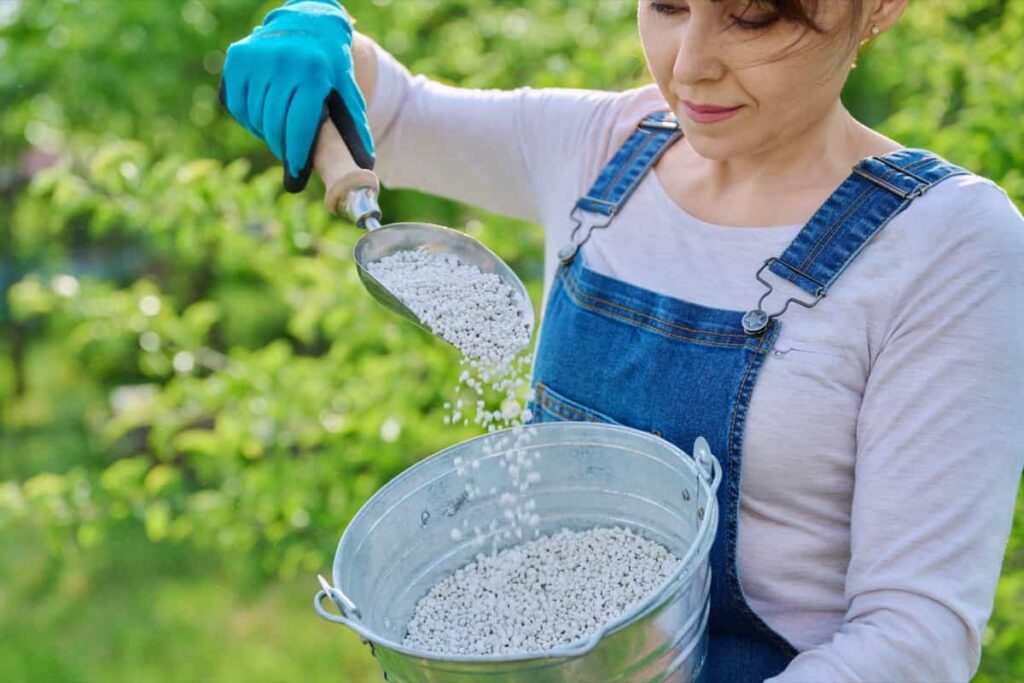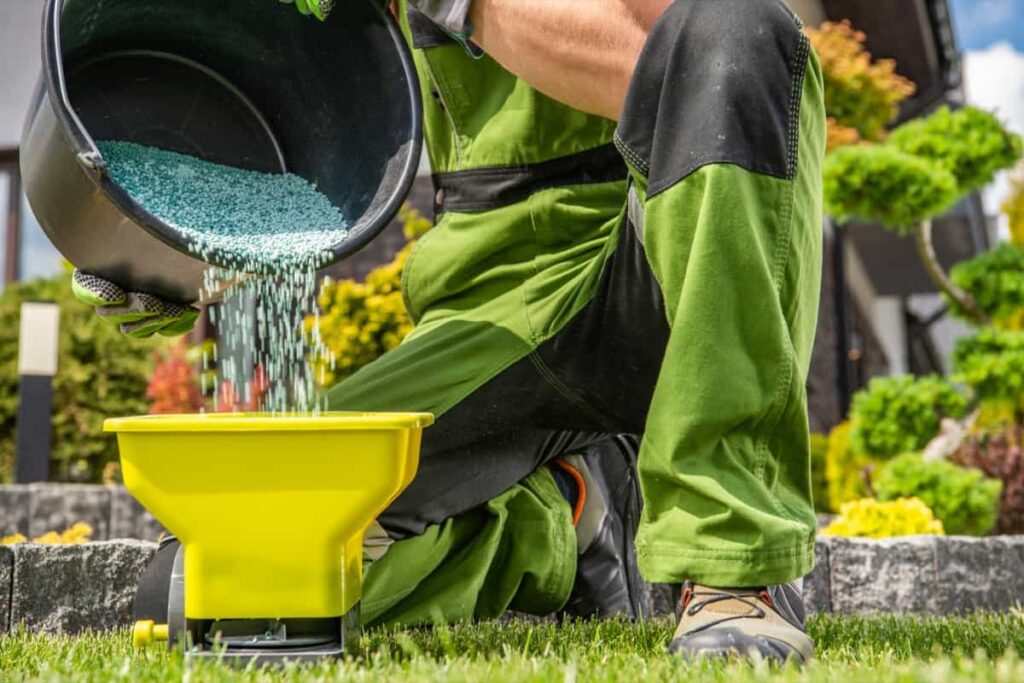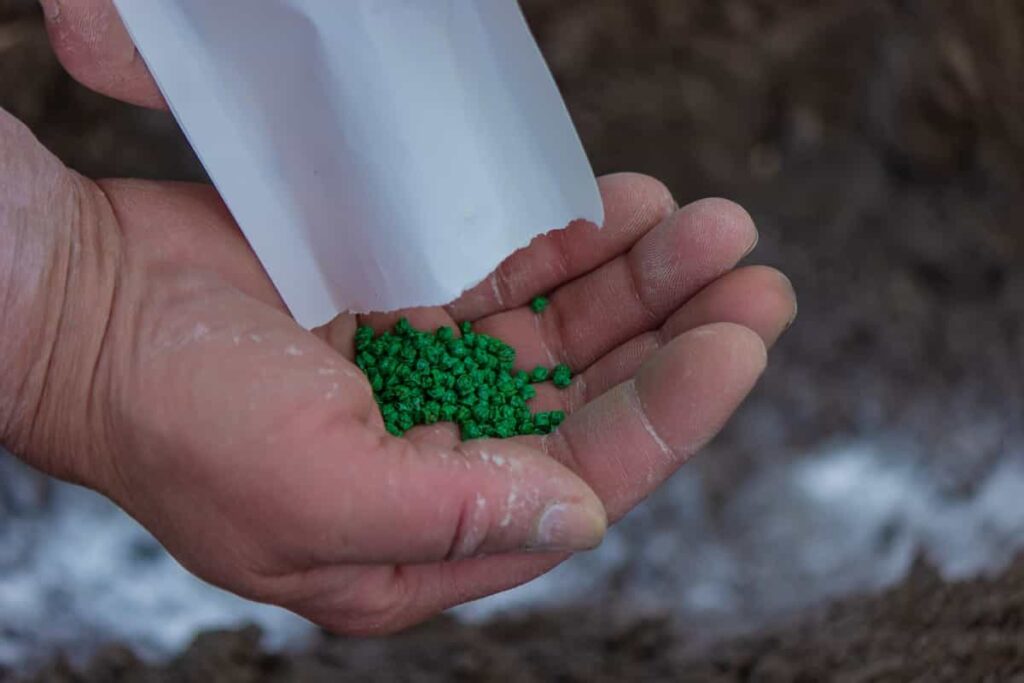Fertilizer plays a crucial role in providing essential plant nutrients, helping them grow and thrive. Understanding why your leaves are turning yellow is crucial in finding an effective solution. To address this issue, there are various types of fertilizers available that can help treat yellow leaves effectively.

Top 10 Fertilizers for Treating Yellow Leaves in Indoor Plants
- Organic Plant Food: Made from natural ingredients like seaweed and fish emulsion, organic plant food provides essential nutrients that promote healthy leaf growth.
- Compost Tea: Brewed from compost or worm castings, compost tea is rich in beneficial microbes that enhance nutrient absorption by the roots.
- Epsom Salt Solution: High in magnesium sulfate, an Epsom salt solution corrects magnesium deficiency often associated with yellowing leaves.
- Fish Emulsion Fertilizer: Derived from fish waste products, fish emulsion fertilizer is a potent source of nitrogen and micronutrients that stimulate green leafy growth.
- Orchid Fertilizer Spray: Specifically formulated for orchids but suitable for other houseplants as well, orchid fertilizer spray contains optimal ratios of macronutrients and micronutrients required for vibrant foliage.
- Liquid Calcium Supplement: Yellowing leaves may indicate calcium deficiency; applying a liquid calcium supplement can help address this issue effectively.
- Miracle-Gro All-Purpose Plant Food: This versatile fertilizer is a favorite among gardeners for its ability to provide essential nutrients. It’s easy to use; mix with water and apply for 1 to 2 weeks during the growing season.
- Jobe’s Organics Fruit & Citrus Fertilizer Spikes: Specifically designed for fruit-bearing trees and citrus plants, these convenient spikes deliver a slow-release formula that feeds your plants continuously over time. The organic ingredients promote healthy growth and vibrant foliage.
- Espoma Organic Indoor Liquid Plant Food: Perfect for houseplants suffering from yellowing leaves due to nutrient deficiencies, this liquid fertilizer is made from all-natural ingredients like kelp extract and humic acids. Dilute it with water and watch your indoor greenery thrive.
- Dr Earth Organic Bud and Bloom Booster Fertilizer: Designed specifically for flowering plants, this organic fertilizer contains beneficial microbes that improve soil health while promoting abundant blooms without any synthetic chemicals.
Organic Solutions to Fix Yellow Leaves in Garden Vegetables
The effective method is using compost. Compost is rich in many nutrients and helps improve soil structure, providing a balanced environment for your vegetables to thrive. Spread a layer of compost around the plant base and gently work it into the soil. Another natural solution is utilizing organic fertilizers such as bone meal or fish emulsion.
Incorporating cover crops into garden rotation can also help combat yellow leaves. Plants like clover or vetch act as living mulch, protecting the soil from erosion and adding nitrogen back into it through their root systems.
The Role of Nitrogen in Correcting Yellow Leaves
Nitrogen is an essential plant nutrient and plays a crucial role in correcting yellow leaves. It is responsible for promoting healthy leaf growth and vibrant green coloration. When plants lack sufficient nitrogen, they may exhibit signs of yellowing leaves. Yellow leaves are often indicative of nitrogen deficiency because this nutrient is necessary for chlorophyll production, which gives leaves their green hue.
In case you missed it: Top 20 Best Indoor Gardening Systems to Buy This Year at Cheap Price

Without enough nitrogen, chlorophyll levels decrease, resulting in pale or yellowish foliage. Nitrogen-rich fertilizers stimulate leaf development and boost overall plant health. Keep in mind that different plants have varying requirements for nitrogen levels throughout their lifecycle.
Best Liquid Fertilizers for Quick Relief from Yellow Leaves
Liquid fertilizers are available in various formulations, each designed to address specific nutrient deficiencies that may be causing yellowing leaves. Some popular options include seaweed extracts, fish emulsion, and compost teas. When applying liquid fertilizers, it’s important to follow the manufacturer’s instructions carefully to avoid over-fertilization, which can lead to other problems. It’s also recommended to apply these fertilizers during the plant’s active growing season when they can make the most use of the nutrients.
Iron Supplements for Plants with Yellow Leaves
One common cause of yellow leaves in plants is iron deficiency. Iron plays an important role in plant development, as it is essential for chlorophyll production. Without enough iron, plants cannot produce the green pigment that gives them their vibrant color. There are different types of iron supplements available, including chelated iron and liquid iron fertilizers.
Plants more easily absorb chelated forms of iron and provide faster results. Liquid formulations are convenient to use and quickly deliver the necessary nutrients. When applying iron supplements, it’s important to follow the instructions provided on the product label. Overapplication can lead to toxicity in plants, so be sure not to exceed recommended doses.
Micronutrients Mixes: Fixing Yellow Leaves in Flowering Plants
Micronutrients are required by plants in small amounts but play a crucial role in their growth and development. These include iron, manganese, zinc, copper, boron, molybdenum, and nickel. When these nutrients are lacking in the soil or not readily available to the plant roots, it can result in nutrient imbalances and lead to yellow leaves.
To address this issue effectively, using micronutrient mixes specifically formulated for flowering plants can be highly beneficial. Regularly feeding your flowering plants with micronutrient mixes will help prevent and correct nutrient deficiencies leading to yellow leaves. Remember to follow the manufacturer’s instructions regarding dosage and frequency of use for best results.
pH Balancing Fertilizers: Key to Healthy Green Leaves
Maintaining the proper pH balance in your soil is crucial for the overall plant health. When the pH levels are off, it can affect a variety of issues, including yellowing leaves. Thankfully, there are fertilizers available that can help restore and maintain the optimal pH balance. One such type of fertilizer is known as a pH-balancing fertilizer. These fertilizers are specifically formulated to adjust the acidity or alkalinity of your soil, ensuring that it falls within the ideal range for plant growth.
When choosing a pH-balancing fertilizer, make sure to consider both its composition and application method. Remember that different plants have different preferences when it comes to soil acidity or alkalinity. By using a well-chosen pH-balancing fertilizer regularly, you’ll create an environment where nutrients become readily available for uptake by roots while preventing nutrient deficiencies that often manifest as yellow leaves.
Eco-Friendly Fertilizers for Yellow Leaf Syndrome in Lawns
The eco-friendly option is compost tea. Made by steeping compost in water, this natural fertilizer provides essential nutrients to your lawn while also improving soil health. It’s easy to make at home and can be applied with a watering can. Another environmentally friendly choice is seaweed extract.
In case you missed it: 20 Steps to Grow Mandarin Oranges in Season from Seeds, Fruit, indoors, and Pots

This organic fertilizer contains trace minerals and growth hormones that promote healthy green leaves in lawns. For those who prefer granular fertilizers, there are options made from plant-based materials such as alfalfa meal or soybean meal. These products release nutrients slowly over time, ensuring a steady supply for your grass without causing excessive growth or environmental harm.
Frequently Asked Questions (FAQ) on Fertilizer for Yellow Leaves
What Causes Yellow Leaves in Plants?
Yellow plant leaves can be a sign of various underlying issues, including nutrient deficiencies, overwatering, pests or diseases, and improper pH levels. Finding the root cause is crucial for finding the best fertilizer solution.
How Do I Know Which Nutrients My Plants Need?
A soil test is a good starting point to determine the specific nutrient deficiencies in your garden. It provides valuable insights into the soil pH level, helping you understand what your plants require for optimal growth.
Which Nutrients Are Essential for Addressing Yellow Leaves?
Three primary macronutrients – nitrogen (N), phosphorus (P), and potassium (K) – play key roles in plant health. Nitrogen promotes leafy growth, phosphorus supports root development and flowering, while potassium enhances overall plant vigor.
Can I Use Any Fertilizer on All My Plants?
Different plants have different nutrient requirements. It’s important to choose a fertilizer that suits the specific needs of each plant variety.
In case you missed it: Best Indoor Apartment Plants for Small Spaces: Low-Maintenance, Edible, Flowering, Succulents, and Cacti

Conclusion
The yellowing of leaves in plants can be a common issue caused by various factors such as nutrient deficiencies, imbalanced pH levels, or environmental stress. However, with the right fertilizer and care, you can effectively treat and prevent yellow leaves in your indoor plants and garden vegetables. Fertilizer plays a vital role in addressing yellow leaf syndrome because it provides essential nutrients needed for healthy plant growth.
- Crops Grown in Summer Season: Best Choices for Summer Gardening
- Organic Pest Control for Tomato Farming
- How to Maximize Sheep Farming Profit
- Broccoli Varieties: Choosing the Right Cultivars for Your Farm
- How to Raise Pigs in Your Own Backyard: A Comprehensive Guide
- Budget Friendly Sheep Shed Ideas: Cheap and Low-Cost Tips
- How Much Do Cattle Farmers Make: Revenue Streams in Cattle Farming
- Management Pests and Diseases in Your Cotton Field
- Sheep Farming Business Plan for Beginners
